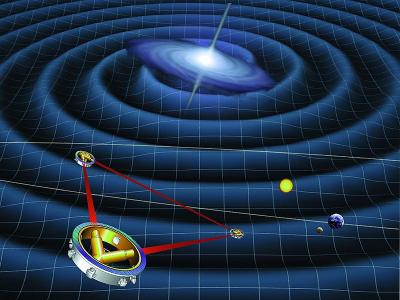LISA Pathfinder & LISA

arranged in a triangle formation
Credit: NASA
LISA stands for Laser Interferometer Space Antenna. LISA will be the first telescope to find and study gravitational waves in space. These waves are tiny ripples in space-time. They are made by massive events, like black holes merging. ESA plan to launch LISA in the 2030s.
In 2015, ESA launched a test spacecraft called the LISA Pathfinder. Test missions like this are often called proof of concept missions. In 2016, ESA announced the LISA Pathfinder proved the LISA mission concept worked. With the test mission complete, the LISA Pathfinder was deactivated in 2017. Work continues on Earth to build and test LISA.
LISA Pathfinder was a small scale model of part of LISA. LISA will be made up of 3 separate spacecraft which will travel together around the Sun. Lasers will bounce light between the 3 spacecraft. If a gravitational wave passes by, it will stretch and squash the space between the 3 spacecraft. This will change the distance the laser light travels from one spacecraft to another. LISA will be able to measure these tiny changes.
With laser interferometer like LISA, the longer the distance of its 'arms', the better. LISA's 3 spacecraft will be 2.5 million km apart and arranged in a triangle. This will give LISA 'arms' 2.5 million km long. This makes it much more sensitive than LIGO, which has arms only 4 km long.

